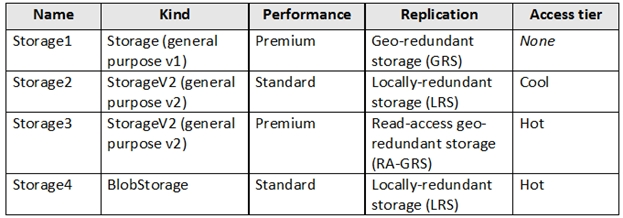At ValidExamDumps, we consistently monitor updates to the Microsoft AZ-104 exam questions by Microsoft. Whenever our team identifies changes in the exam questions,exam objectives, exam focus areas or in exam requirements, We immediately update our exam questions for both PDF and online practice exams. This commitment ensures our customers always have access to the most current and accurate questions. By preparing with these actual questions, our customers can successfully pass the Microsoft Azure Administrator Exam exam on their first attempt without needing additional materials or study guides.
Other certification materials providers often include outdated or removed questions by Microsoft in their Microsoft AZ-104 exam. These outdated questions lead to customers failing their Microsoft Azure Administrator Exam exam. In contrast, we ensure our questions bank includes only precise and up-to-date questions, guaranteeing their presence in your actual exam. Our main priority is your success in the Microsoft AZ-104 exam, not profiting from selling obsolete exam questions in PDF or Online Practice Test.
Note: This question is part of a series of questions that present the same scenario. Each question in the series contains a unique solution that might meet the stated goals. Some question sets might have more than one correct solution, while others might not have a correct solution.
After you answer a question in this section, you will NOT be able to return to it. As a result, these questions will not appear in the review screen.
You need to ensure that an Azure Active Directory (Azure AD) user named Admin1 is assigned the required role to enable Traffic Analytics for an Azure subscription.
Solution: You assign the Traffic Manager Contributor role at the subscription level to Admin1
To enable Traffic Analytics for an Azure subscription, you need to have a role that grants you the following permissions at the subscription level:
Microsoft.Network/applicationGateways/read
Microsoft.Network/connections/read
Microsoft.Network/loadBalancers/read
Microsoft.Network/localNetworkGateways/read
Microsoft.Network/networkInterfaces/read
Microsoft.Network/networkSecurityGroups/read
Microsoft.Network/publicIPAddresses/read
Microsoft.Network/routeTables/read
Microsoft.Network/virtualNetworkGateways/read
Microsoft.Network/virtualNetworks/read
Microsoft.OperationalInsights/workspaces/*
Therefore, to meet the goal of ensuring that an Azure AD user named Admin1 is assigned the required role to enable Traffic Analytics for an Azure subscription, you should create a custom role with the required permissions and assign it to Admin1 at the subscription level.
You have an Azure subscription that contains the storage accounts shown in the following table.

You need to identify which storage account can be converted to zone-redundant storage (ZRS) replication by requesting a live migration from Azure support.
What should you identify?
You have an Azure subscription. The subscription contains virtual machines that connect to a virtual network named VNet1.
You plan to configure Azure Monitor for VM Insights.
You need to ensure that all the virtual machines only communicate with Azure Monitor through VNet1.
What should you create first?
By default, the agents communicate with Azure Monitor over the public internet. However, if you want to ensure that all the virtual machines only communicate with Azure Monitor through a virtual network named VNet1, you need to configure private network access for the agents.
You have an Azure subscription that contains an Azure virtual machine named VM1. VM1 runs a financial
reporting app named App1 that does not support multiple active instances.
At the end of each month, CPU usage for VM1 peaks when App1 runs.
You need to create a scheduled runbook to increase the processor performance of VM1 at the end of each month.
What task should you include in the runbook?
You have an Azure subscription. The subscription contains a storage account named storage1 that has the lifecycle management rules shown in the following table.

On June 1, you store a blob named File1 in the Hot access tier of storage1. What is the state of File1 on June 7?